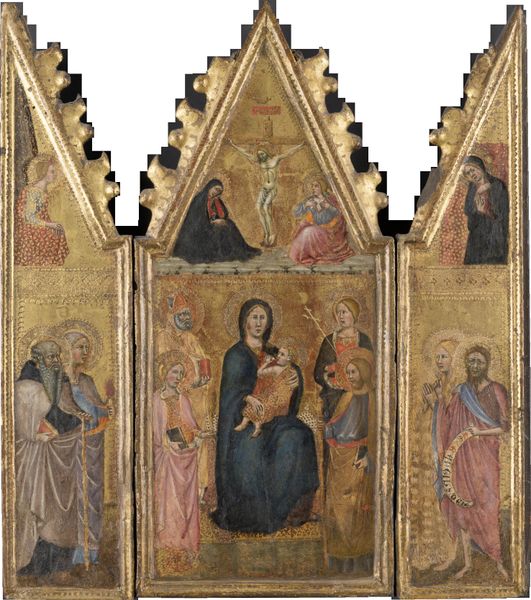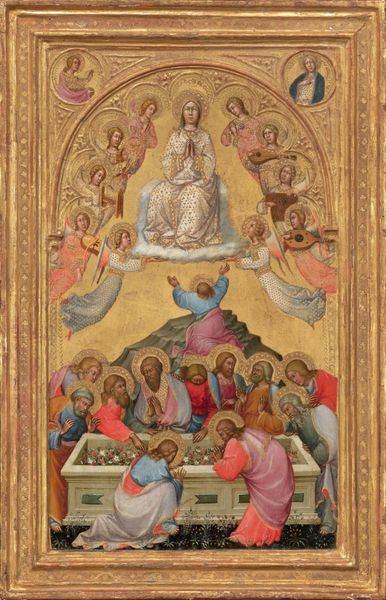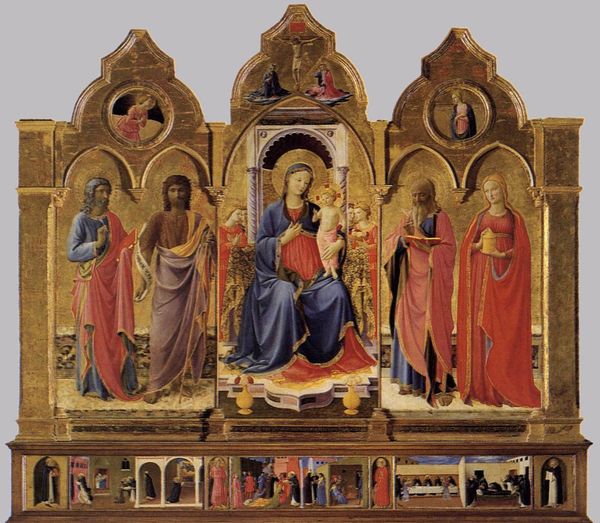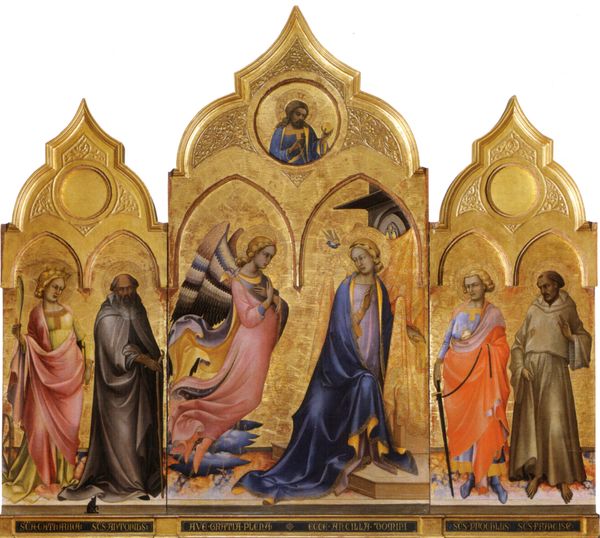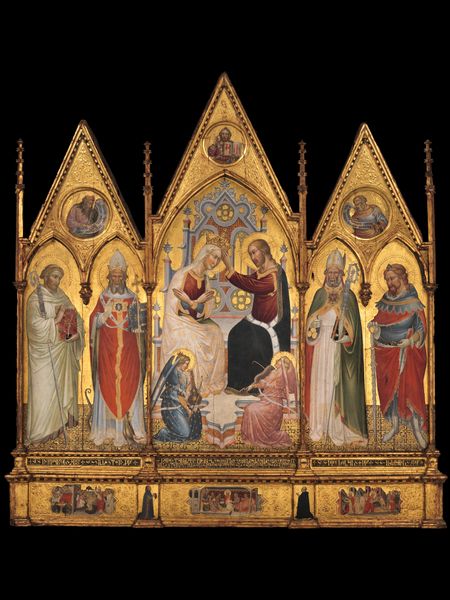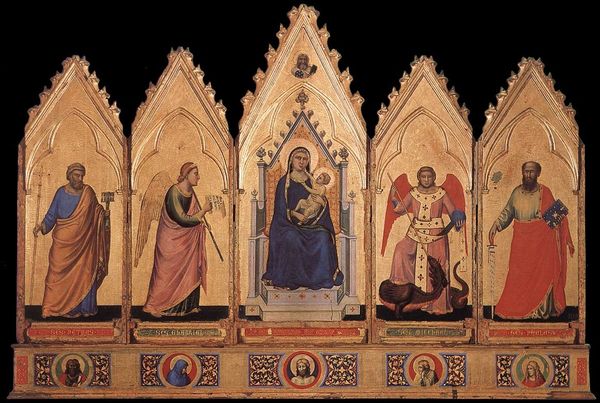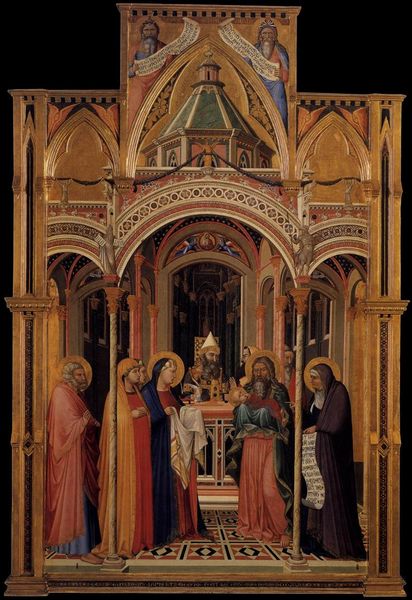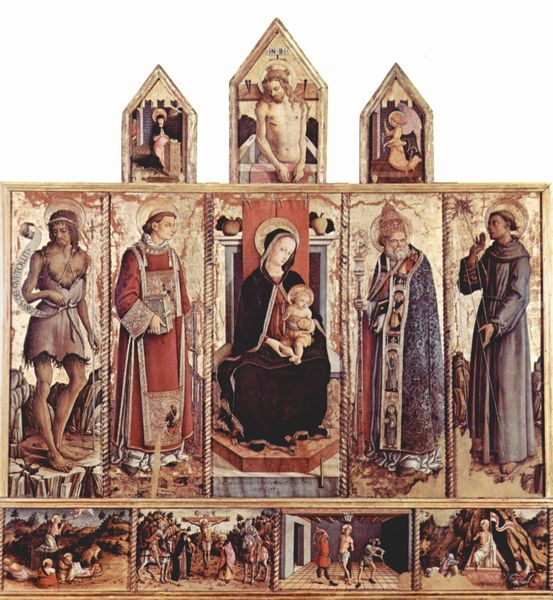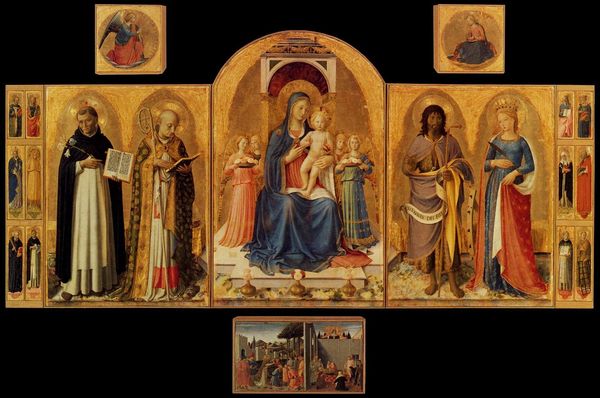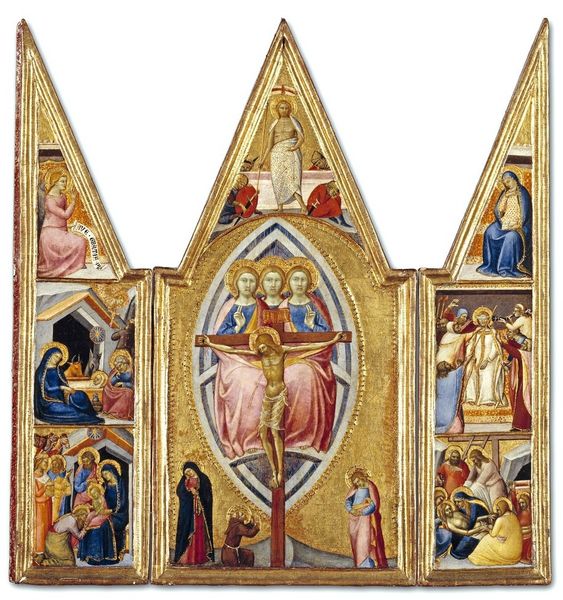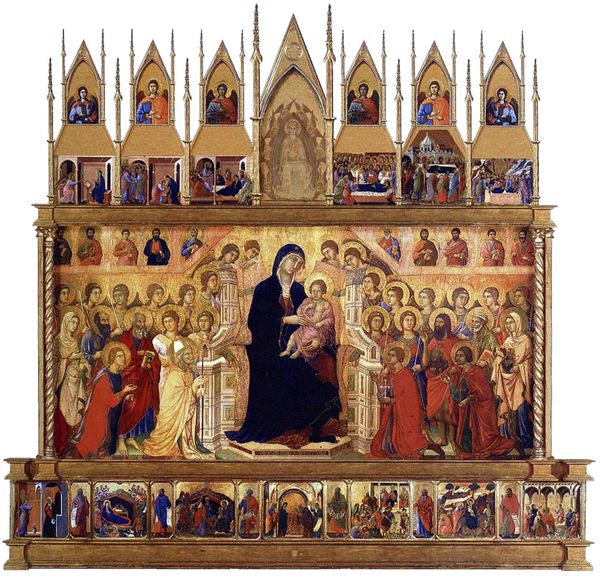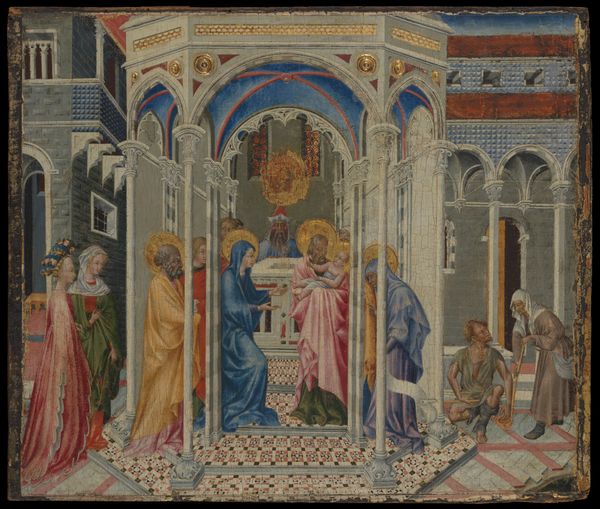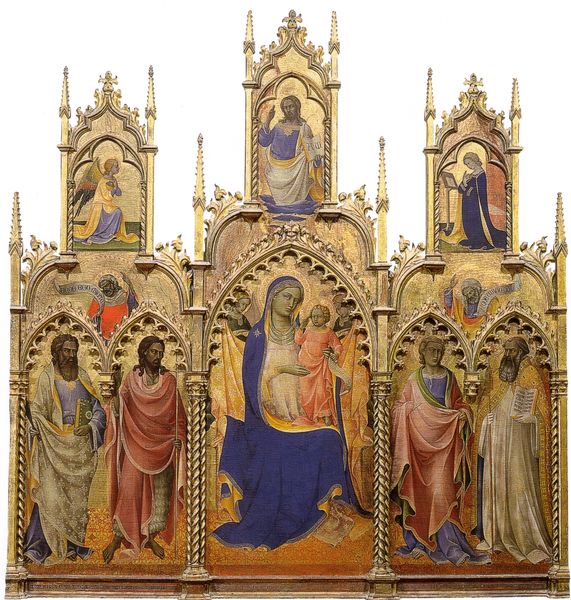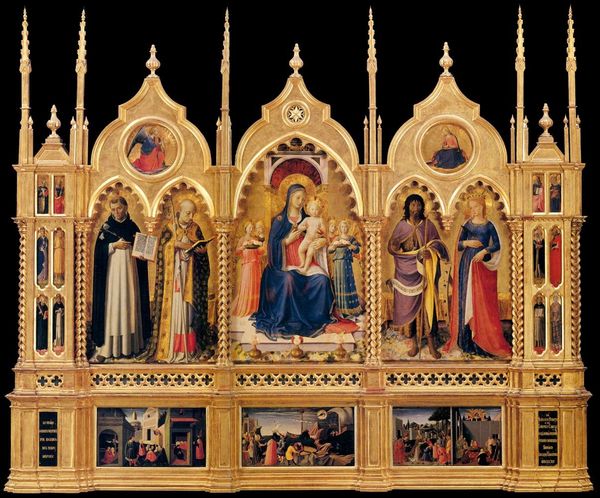
tempera, painting, architecture
#
portrait
#
medieval
#
narrative-art
#
tempera
#
painting
#
figuration
#
line
#
history-painting
#
international-gothic
#
architecture
Dimensions: painted surface: 146.1 × 140.3 cm (57 1/2 × 55 1/4 in.) overall: 147.2 × 140.3 cm (57 15/16 × 55 1/4 in.)
Copyright: National Gallery of Art: CC0 1.0
Curator: What strikes me immediately is the overall sense of calm and order—despite the complexity of the composition. There's a stillness that permeates this crowded scene. Editor: And what scene are we looking at exactly? Curator: We are observing "The Presentation of the Virgin in the Temple", a tempera on wood panel by Paolo di Giovanni Fei, dating back to 1398-1399. It portrays the apocryphal story of Mary being brought to the Temple in Jerusalem as a young girl. Editor: Yes, the architectural space certainly seems to emphasize Mary's smallness as she ascends the stairs. Are we meant to feel the weight of societal expectations placed upon her, the idea of her destiny being predetermined? Curator: Precisely. The architecture serves more than just as a setting; the repeated arches and pillars, all lead toward the central figures. Note, too, how gold leaf catches and refracts light, particularly around the halo of the young Mary, imbuing her with importance. Editor: The arrangement is quite intriguing; you have the holy figures in the foreground, priests, and Mary in the center, while the onlookers are spatially set back on the right. Almost creating a sense of division between public and divine duty. I cannot help but notice the men have direct line of sight and eye contact, the female gazes appear softer. Curator: Absolutely. These carefully arranged sight lines speak volumes. I feel Paolo di Giovanni Fei understood the emotional and psychological resonance of the symbolism. Look closely at the details, the sumptuous robes, and the solemn faces—all contributing to a sense of religious solemnity. The painting is rich in symbolic representation of religious customs from this period in history. Editor: And by examining it, aren't we also scrutinizing the construction of identity and female power dynamics within that specific cultural moment? It prompts one to consider how such imagery shaped, and perhaps constrained, understandings of women’s roles. Curator: I'm happy to close with that observation; the visual vocabulary indeed speaks volumes about cultural ideologies present then—and reminds us to actively decode inherited symbolisms today. Editor: It is this that connects past with present.
Comments
No comments
Be the first to comment and join the conversation on the ultimate creative platform.
